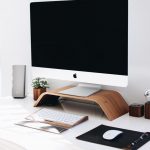5 important office trends that will redefine the modern workplace

Each year brings about new changes, along with new office trends that are slowly reshaping the corporate world. However, due to the novel pandemic we have recently experienced, our lives have been impacted in quite unexpected ways, not only changing the manner in which we work, but also completely transforming the definition of the workplace as we know it. This situation presented us with entirely new office trends mostly focused on interconnection and a new need for flexibility that will undoubtedly have a great impact on the way we work in the future.
Supporting a diverse workforce
Today’s workforce presents a notable generational gap to bridge, larger than ever before. Even though Millennials and Gen Z now represent one of the largest and most important workforce percentages, Gen X still plays quite a significant role, with a notable percentage of Baby Boomers still being included in the workforce. But apart from differing significantly in age, these generations also differ in thinking, problem-solving, as well as general workplace expectations.
Possibly for the first time ever, the workplace has to appease four different generations, which is why the latest design trends are mostly focusing on meeting different expectations and styles of working. In combination with this generational gap, the underlying physical differences between humans have also brought about the need for more inclusive workplaces, thus creating innovative environments that promote diversity, encourage collaboration, and cater to individual needs, all at once.
A renewed need for well-being
Putting the well-being of employees at the forefront is not a new concept, as experience has shown time and time again that focusing on employee health can help to boost focus, promote creativity and motivation, and improve overall results. However, the well-being trend has never been quite as popular as it is now, quite possibly due to the fact that the closures and lockdowns we have recently experienced heightened our need for human interaction and social connection.
Fueled by this renewed need for interconnection, workplaces are now mostly designed with well-being in mind. Apart from the more traditional aspects such as building common areas with comfortable seating and utilizing ergonomic office furniture, offices are now focusing on biophilic design as well. This design style aims to infuse the workplace with fresh air, ample natural light, as well as a number of other natural aspects, all of which have been shown to be quite beneficial for overall employee well-being.
Modular solutions for flexibility
Modular construction eliminates traditional construction sites by using off-site technologies to build separate modules, which are then assembled on-site into a complete building much more quickly and efficiently compared to their traditional building alternatives. In recent years, this construction option has become increasingly popular when it comes to building modular classrooms as a quality space solution for many schools and education facilities.
However, that’s not the only area where such construction could be beneficial. Due to their speed and flexibility, modular buildings have also been embraced by many workplaces around the world, whether it comes to additions such as libraries, canteens, specialist and multipurpose rooms, or even entire office complexes. Apart from being finished incredibly quickly, modular buildings don’t disrupt the workflow in the same way traditional construction might, while also providing more flexibility for potential adaptation and changes. That is why modular solutions have become especially popular among smaller and mid-size businesses that simply can’t afford to lose precious time and resources due to traditional construction sites.
Smart technology integration
The integration of technology into the workplace is not an entirely new trend. From energy-saving solutions such as intelligent lighting and climate control to accessibility features like smart desks, virtual assistants, and voice-controlled gadgets, technology has always been at the forefront of efficient, modern offices. However, the recent global events have brought about new technological needs that we might not have had before.
Considering the fact that a blend of office and at-home working has now become the norm, it’s likely that such a combination of environments will continue to be utilized in the future. This means that most businesses will now have to use new software and tools that will make working between the home and the office a seamless, streamlined experience, whether that means promoting team communication or increasing the company’s online presence.
Sustainable workplace solutions
As the need to preserve the environment grows in our society, and changing our behaviours in order to make positive changes becomes more common, modern workplaces have to follow suit. A majority of today’s workforce, particularly younger generations, wants to align their personal moral values with professional practices, which is why employees often avoid working for companies they believe to be unethical or harmful to the environment.
In response, businesses are now making more efforts to reduce their carbon footprint, whether that means using more eco-friendly materials and focusing on sustainable workplace design, or even making simple changes that are beneficial to the environment, such as preserving water and energy, banning single-use plastics, or encouraging recycling and low- and zero-waste lifestyles.
In conclusion
Evidently, the world has changed in quite unprecedented ways, and so has our view of the traditional workplace. Working environments are now putting diversity, flexibility, sustainability, and well-being at the forefront, setting new trends that will completely transform the way we view and conduct business.
Derek Lotts is an experienced freelance writer and researcher. His main areas of interest are small business, home improvement, and sustainable living. He strongly believes in the power of sharing knowledge and ideas through the mediums of modern technology.








